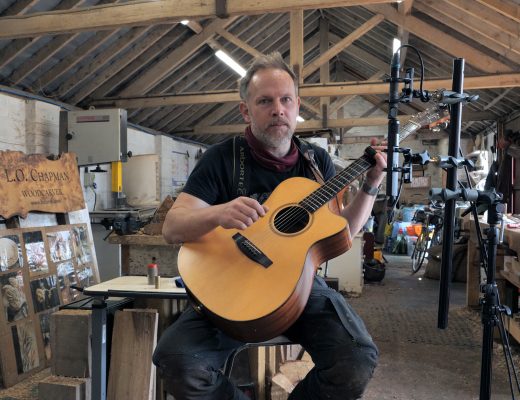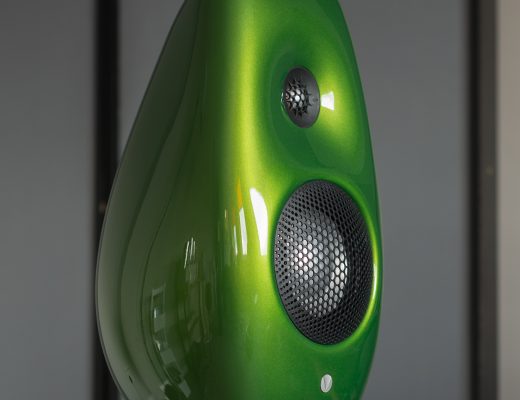
Introduction
As a bit of a change from microphones and windshields, I thought there might be a little value in some ramblings on the three recorders I use currently: not so much a review or test of any of them – none of them are new or even current products – but, rather, covering what I see as their different good (and bad) points and their uses to me. That is, for a mix of location music recording (mostly acoustic), sound effects, ambiences, and some dialogue recording for films (for YouTube). With luck this might be of interest to one or two others pondering these recorders or, indeed, their updated versions (for which many of the points remain pertinent): and on the latter, I’ll also cover why I haven’t yet found compelling reasons to buy the updated versions.
Perhaps first I should talk about sound quality. Much has been said and written about the different preamps (and, though less often discussed, ADCs) in the Sound Devices 788T vs the MixPre-series vs the Zoom F8/F8n/F8n Pro, mostly, but not always, placing them in that pecking order from top to bottom. Doubtless there is prejudice involved in some cases, but I am not going to quibble with highly experienced sound engineers with more finely-tuned hearing or, at least, listening skills: indeed, I would agree with them that the 788T has the edge, with little to choose between the MixPre-3 and the Zoom F8n. There are – I would hope – a lot of comparative recordings out there, but just to add to them, for a bit of fun I took the three recorders out with me this morning when taking advantage of a dry and fairly windless day (all too rare this summer in England) to have another go at a passing steam train recording for the current sound library project. It wasn’t a perfect recording (aeroplane noise yet again preventing a long intro from the train a mile or so off), but it will do for our purposes. The mics used were an MS pair (Sennheiser MKH 8040 and MKH 8030).


Make what you will of this field-recording example (and if really keen, download and do a randomized comparison, preferably listening to very short sections on repeat: I found the sections with the carriages passing, after the loudness of the loco, most revealing), what is indisputable is that there are differences, but they are subtle (for many) and for much use pale into insignificance compared to mic choices and mic placement.
A tiny three-channel (OK, now five-channel) recorder: the Sound Devices MixPre-3
The MixPre-3 was introduced back in spring 2017, along with its larger siblings – the MixPre-6 and the Mixpre-10. In 2018 the MixPre-3M, MixPre-6M and MixPre-10M were introduced: these were different versions of the recorders designed for music recording only, with such features as overdubbing, track laying, punch in/out, bounce, reverb and metronome. All these features were then made available to the original MixPre-series recorders via purchase of a plugin. In 2019 the MixPre-series ii recorders replaced the original models, with the main changes being the addition of 32-bit float recording to the series, internal timecode generation added to the smaller recorders (the MixPre-10T had it from the outset), and the addition of 192kHz recording to the MixPre-3 (its larger siblings already had it in the first series). The M series disappeared, with the Musician plugin continuing to be available as it is today.
I got my order in early and received my MixPre-3 in May 2017, so went through all the flurry of firmware updates that followed initial launch (indeed, reported on some required bug fixes and requested additional capabilities): the most useful refinement to firmware was, perhaps, in relation to mid-side recording, where decoding could be applied to the MS signal going to the LR mix only. Seven years on, I remain impressed by the recorder: aside from excellent sound quality and flexible set up, the key values for me are its diminutive size (less evident with its larger siblings), three P48 channels (so much handier than just two: think double mid- side, a stereo pair plus shotgun etc.), which can now (since 2023 with the +2 plugin) be used at the same time as its USB or aux inputs (think lav mics) to give five channels, and very straightforward operation. If the channel count has me covered, then this is the recorder I will take into the field when needing to travel light and compact for nature, ambience, effects and simple music recording. And with the unique (for a field recorder) ability of the MixPre-series to do overdubbing (recording up to 12 tracks: yes, even on the little MixPre-3 model), then this is the only recorder I have that will allow building up of a song on location sans laptop, musician by musician (think Playing for Change). By way of an example, back in the summer of 2018 I put the MixPre-3 with the new plugin to early use:
So why didn’t I replace the MixPre-3 with the later version, or, indeed, a larger version? Well, the latter is easy to answer: a larger version would lose the size advantage. That isn’t just the recorder, but also its power supply: the MixPre-3 can run three P48 mics for around 2.5hrs on rechargeable Eneloop Pro AAs, so, for my purposes, there’s no need for clunky external batteries (the battery sled allows changeover to spare sets of AAs in seconds). And the MixPre-3ii hasn’t attracted me by its virtue of its timecode generator (not something I use) or 32-bit float recording: even recording sound effects (such as the steam train recordings above) doesn’t give me level setting issues. Doubtless some find 32-bit float handy (e.g. for drop rigs for nature field recording, or for inexperienced recordists), but, personally, I see it as a solution to a problem I don’t have. To each their own. Now there are some aspects of the MixPre-3 that I wouldn’t mind seeing improved: on the hardware design side, surely the three XLR inputs could have been moved to the one side, in so doing improving the position and form of the fiddly on-off switch; and on the software side, it would be useful if the gain/trim could be adjusted more finely than whole dBs, if the front knobs could be used for the 76dB of input gain/trim rather than as faders (or, in basic/custom mode, as combined gain/trim and faders), and if individual MS channels could have gain/trim adjusted despite being linked to allow for different sensitivity of mics. Minor quibbles, all of these.
Eight-channel recording: the Zoom F8n and the Sound Devices 788T
For larger counts than three P48 channels I used to use a mixing desk with ISO outputs to a laptop, but I really don’t like being dependent on a PC when tracking and, of course, this doesn’t lend itself so well to field recording. Looking for a field recorder with more channels, and having prior experience of the MixPre-3, means that the MixPre-10 was a serious contender. But a combination of factors – not least the massive jump in prices of these in the UK – made me consider the alternative of the Zoom F8n. By then (autumn 2022) the 32-bit Zoom F8n Pro had just been launched, so prices were very keen for the older model and, evidently, I wasn’t bothered by the 32-bit update. The form is more conventional, perhaps, than the MixPre-series, which is good for bag use (no trim/gain knob on the side), and the user interface and menus are all straightforward: the knobs and buttons are very small, but so are my hands, with the fiddliest being the on-off button again. I was pleasantly surprised by the sound quality, and don’t feel I am dropping down in that regard in any significant manner when upping the channel count has seen me use the F8n instead of the MixPre-3. An increase in channels has meant that rechargeable AAs are no longer feasible (and the eight of them are clunky to change compared to the four in the MixPre-3), so they are just there for back up: I power the recorder via its hirose socket with a L-mount battery (and Smallrig 3018 battery adapter plate). The two-card recording is a step up from the MixPre-3, providing redundancy, and the physical build quality is OK: excellent top and bottom aluminium plates, not quite matched by the front panel – a slight wobbliness to the fader knobs just doesn’t give reassurance of longevity. But solid enough for bag use. There are some great functions built in (e.g. holding down two channel buttons to link and unlink mic pairs), but I was disappointed that choosing the trim mode for the front knobs means that you lose use of a decent screen showing metering of individual tracks: so I am stuck with using those knobs as faders (when not really concerned about the LR mix). Amongst other limitations are the lack of word clock as, more latterly, I would like to be able to link recorders for higher channel counts (there is a lot disinformation out there, but, after pursuing this thoroughly, not least with Zoom, the F8/F8n/F8n Pro lacks the ability to provide the clocking for a slave unit and get sample-accurate sync); a lack of routing options, which include the inability to decode an MS linked pair to the LR mix whilst recording the M and S to the ISO tracks, and, of course, a lack of outputs; and some operational details such as back-lit buttons (you try operating the Zoom F8n in near darkness and see what I mean!). Additionally, the limiters aren’t perfect (they noticeably inject hiss).

The subsequent F8n Pro addresses the limiter issue, but finding a recorder that doesn’t have the other limitations is not easy: other than the MixPre-10Tii (around £2000), which has word clock but doesn’t fix most of the other shortcomings, the current field recorder options are a huge step up in terms of cost: e.g. the Sound Devices 888 (8 channels of P48 preamps) at £9600, the Sound Devices Scorpio (16 channels of P48 preamps) at £12000, or the Sonosax SX-R4+ with the AD8+ preamp (giving 12 channels of P48 preamps) at £10000. And, also, these machines offer functionality beyond my modest needs, such as Dante. While happy with my MixPre-3, I remained unconvinced by the MixPre-10Tii and found myself increasingly hankering after the Sound Devices 788T. Introduced in 2008 (and discontinued in 2019), this was the precursor to the current 888, and retailed for around £7,300 (updated for inflation). The 788T features word clock, AES inputs, as much flexibility in routing as you could imagine, more outputs than the F8n, trim/gain control knobs, dual recording (triple if you like Firewire today!), illuminated buttons etc. and is built like a tank. After looking at the market for some time, I snaffled a beautifully cared for example from an LA sound mixer for about £1400 (inc. VAT and delivery), so that my most recently added recorder is also the oldest. Soundwise there is, as I said at the start of this post, not a lot in it: but at least I know I’m not shooting myself in the foot or under-serving the mics that I have. Functionality wise, there were a few surprises I somehow missed: the fast headphone routing selection, and not least of all, the fact that the main screen turns red when recording (and green when playing back) – an elegant way of reducing the cock-up factor. There’s an element of the 788T that appeals because of its amazing yet slightly old-school engineering (the sort of thing that means I might be tempted to buy a Nagra IV-S at a weak moment, if – unlikely – having surplus cash sloshing around!), but at the same time it stands up to the more modern MixPre-series and Zoom F8n/F8n Pro and has professional features and build-quality that are well above them. OK there’s a risk of failure with older electronic gear, but they remain repairable, and I’m not earning a crust recording production sound for Hollywood films.

Conclusions
So where does this leave me? Above all, reassured that none of my recorders lack much in terms of sound quality: the 788T has a fantastic reputation in this regard and even I can hear this difference, and the other two are close enough for most purposes. And for use, well that’s the MixPre-3 for field recording with minimalist kit, such as for sound effects, or for anything that requires overdubbing; the 788T for music recording where I need a larger channel count; and the F8n where I need a larger channel count in the field, yet want a lighter recorder than the 788T, and also as a back-up to the 788T. Any of the three work fine for dialogue: usually I go with the MixPre-3 as my needs in that area are simple, so lightness wins out. Longer-term, a second 788T would give me 16 channels for ambitious projects, if needed: that could be borrowed or hired for those occasions if I don’t stumble across a real bargain over the years. If I do pick up a second 788T, doubtless the F8n will go: the weight advantage for high mic-count field recording is rather moot since, inevitably, that involves more mics, stands, cables and windshields (i.e. a whole lot of other gubbins). We all have different recording needs, but, just possibly, some of this may chime with somebody and give them food for thought.




